Best Practices: Manage Your Albedo in Enscape
A rendering technique nearly perfected in the gaming world is the understanding and application of Albedo to their materials. The result is a consistent, more realistic effect throughout all your images and projects.
It is fruitful to continue to develop your skills professionally. This is true in any profession, but even more so in the AEC space, given the complexity of the built environment: materials, costs, science, health, environment, art, efficiency, human comfort and much more. There are small things that can be done to make the results even more appealing and realistic. Albedo is one of them.
It’s important to know the meaning behind the colors if you want to create consistent renderings. For example, the brightness relation of concrete, paper and snow can be easily mixed up and lead to implausible images. It becomes obvious for vegetation if you use unrealistic greens. Using albedo reference images or tables ensures that your materials are physically correct and if you’re still unhappy with the result, it might be a better idea to change the lighting conditions.
The big picture
Let’s start with a high-level overview of what this somewhat uncommon thing called albedo is.
“The fraction of incident light or radiation reflected by a surface or body, commonly expressed as a percentage.” From Wiktionary
- Albedo, where “ALB” is from the Latin “Albus” which means white.
- Albedo is to be distinguished from reflectivity, which refers to one specific wavelength (monochromatic radiation).
- The amount of light reflected back from a surface, defined by a value between 0.00 and 1.00.
Albedo is similar to, but not exactly the same as, luminance which measures the brightness of light reflected off a surface. It is scaled by the materials albedo – a darker surface reflects less light, hence causing less luminance. We use the terms luminance and illuminance in lighting design along with specific surface reflectance values.
For albedo, the amount of light reflected depends on the surface. For example, fresh asphalt is very dark and reflects little light; 0.04 (RGB 59-59-59). At the other end of the spectrum we have fresh snow which is a light color and reflects a lot of light; 0.80 – 0.90 (RGB 243-243-243).
Going briefly back to the comparison with lighting design and surface reflectance: some material manufacturers publish surface reflectance values for their products. For example, USG makes ceiling products in North America and have published Light Reflectance – a listing of the surface reflectance values for their products. Here, you will notice the ceiling components are mostly white and have a high light reflectance value between 0.81 – 0.89.

Example surface reflectance values for USG ceiling systems
The fundamental principal is the same between albedo and reflectance/luminance, in that darker colors result in a lower number (less reflective) and higher numbers indicate lighter colors (more reflective).
The Albedo Challenge
Why does the concept of albedo matter in architectural visualization? Let’s take a look at a simple office rendering, comparing a bad and good image in terms of albedo.
Looking at the first image below, something just doesn’t look right. It is not believable nor realistic. We know what the image represents – it’s an office space. But can you tell what’s wrong? The whites are too white, the grass is too dark and the mousepad is solid black.
Now compare this with the albedo-corrected image. The whites are softer, the grass is natural and even the mouse pad looks better. When the proper albedo is applied, the combination of all elements will look more realistic from any view and lighting condition. We no longer need to compensate for a poor rendering engine by using full whites/blacks and other tricks. We can now focus on the physical environment and its measured attributes.
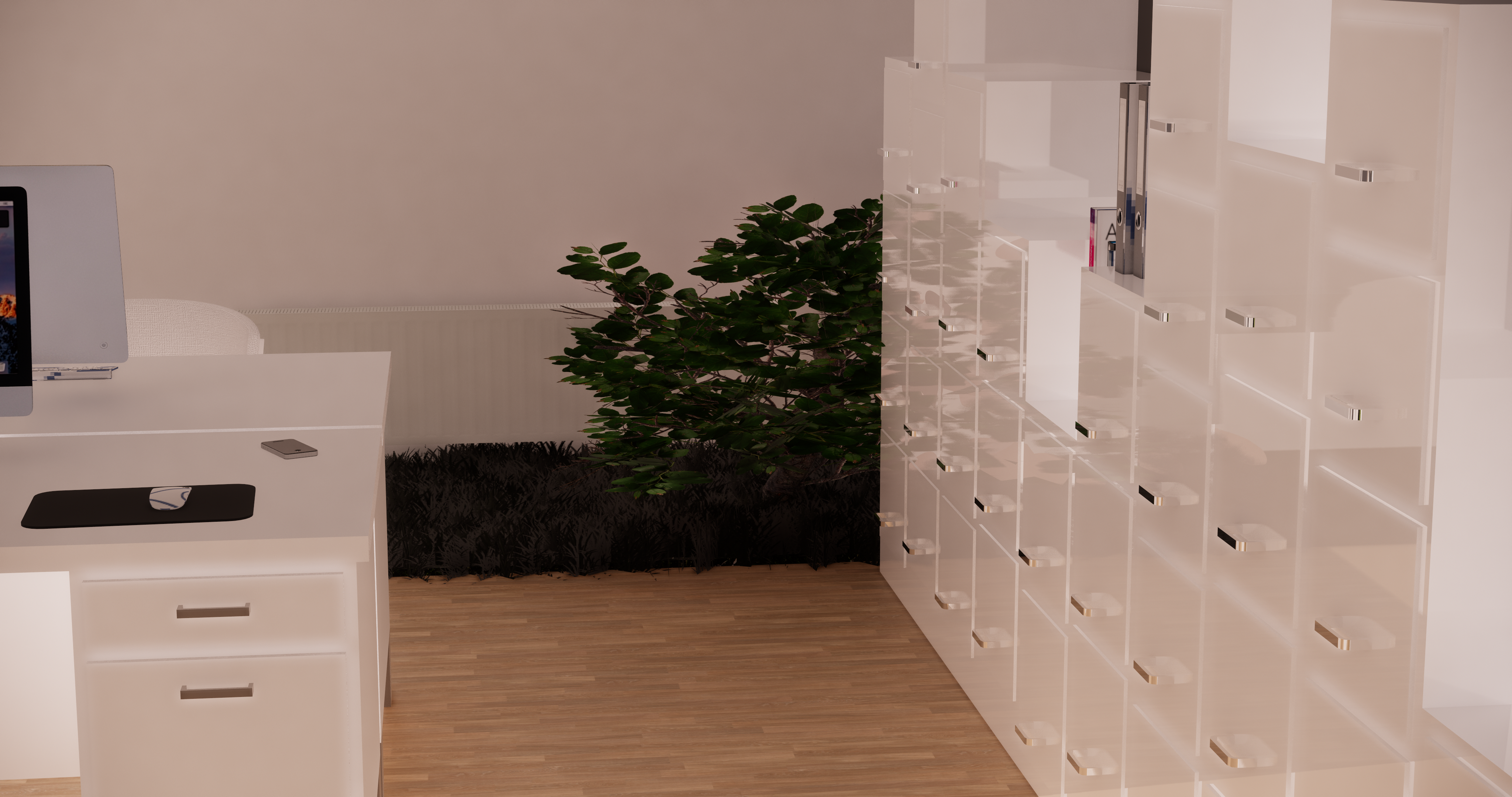
Unrealistic image due to wrong albedo
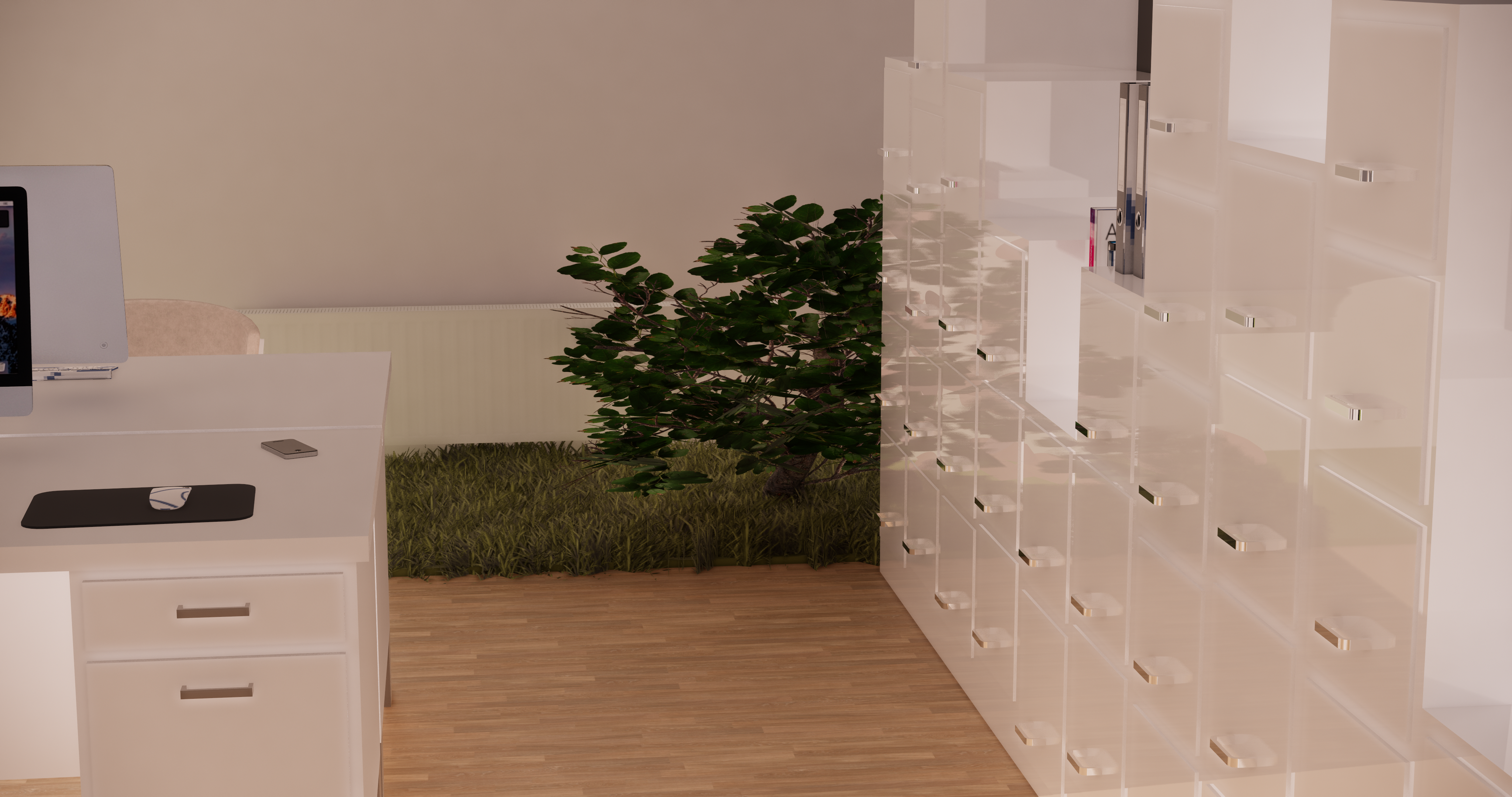
More realistic image due to correct albedo
Reference Charts
Scientists have measured and documented the albedo of many materials. And, by the way, astronomers measure albedo of planets and asteroids to help understand surface composition. Gaming developers have done a great job of applying those results in the development of Physically Based Shader (PBS) materials to increase the level or realism and consistency in their game environments. We can and should do the same in architecture!
Here is one simple list of albedo values for a few materials spread out across the full spectrum between 0.00 and 1.00. The links provided below offer more detailed charts.
MaterialAlbedoRGB
Charcoal0.0450-50-50
Fresh asphalt0.0459-59-59
Worn asphalt0.1291-91-91
Bare soil0.1785-61-49
Green grass0.25123-130-78
Sand0.40177-168-132
New concrete0.55192-191-187
Ocean Ice0.5–0.7148-148-148
Fresh snow0.80–0.90243-243-243

Enscape rendered image depicting the base-range of the full albedo spectrum
I highly recommend you read what some of the gaming designers have written. Marcos Borregales published a nice reference on his blog Technical Art Adventures here: PBR – Albedo Cheat Sheet.
Unity offers this interesting document on representing dark materials, Materials authoring guidelines 1: dark dielectric materials (PDF). This document starts with the following introduction: “With the large adoption of Physically Based Shading, game materials parameters changed and replaced diffuse color with Albedo. This parameter represents the characteristic color of an object, and is independent from the lighting conditions. It can be measured and a lot of documents have appeared online, giving reference values for Albedo. Most of them recommend using a range of albedo comprised between 50 and 243 (in 8 bit sRGB).”
Finally, for reference material, if you really want to get into the “weeds” on this topic you should also read these two posts by Sébastien Lagarde:
• DONTNOD Physically based rendering chart for Unreal Engine 4
• Feeding a physically based shading model
One last comment on these charts is that they are listed in various formats, such as 0-1, RGB, sRGB and a three-digit number representing the RGB average. If they provide a color swatch, I will sometimes use Photoshop’s color picker tool to sample the RGB value for entry into Revit or SketchUp.
Enscape and Albedo
Enscape encourages designers to consider the proper albedo to generate more consistent and realistic imagery. Thus, this blog post! You will even see the term used within Enscape’s Material Editor in SketchUp as shown in the image below. In this context, albedo refers to the main texture or color, from which the albedo value can be derived and compared to the “standards” charts previously mentioned.

Enscape Material Editor with Albedo Settings in SketchUp
Grass example in Revit
A good example, using a regular challenge introduced by a default Revit material used by many, is grass. The image below contrasts the two default Revit-provided grass materials, left and right, with a custom material using a standard albedo in the center. The second image below is the raster image shipped with Revit for grass. It is easy to see how this texture is way to dark to represent the average grass in a rendering.
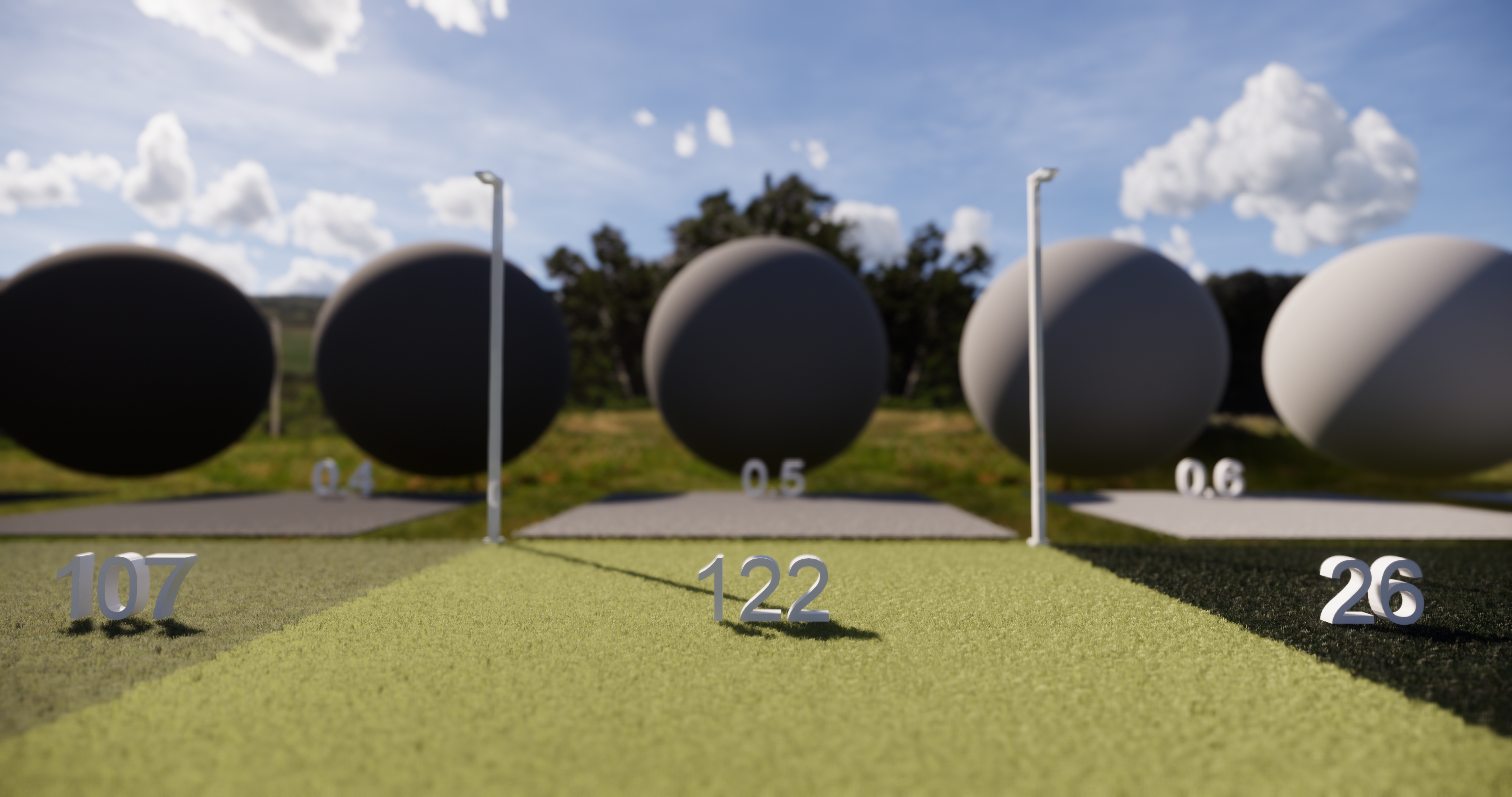
Comparing grass in Revit
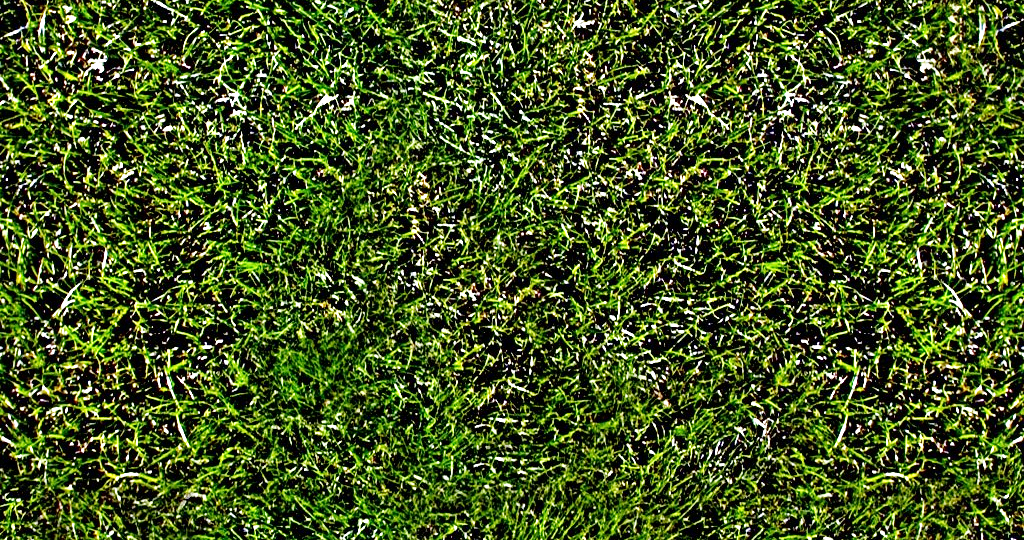
Default Revit grass texture
In the second image, with corrected albedo for grass, the overall image feels more natural. Notice even the grass visible through the building does a better job of fulfilling the design intent compared to the first image, which leaves the backside of the building looking dark and even stormy.
I will admit that the grass is still not perfect in this image. This is an academic example using a solid color for Enscape to sample. In the near future, I have some exciting tips to share about making grass more natural looking through randomness of color within the extents of the grassy areas.
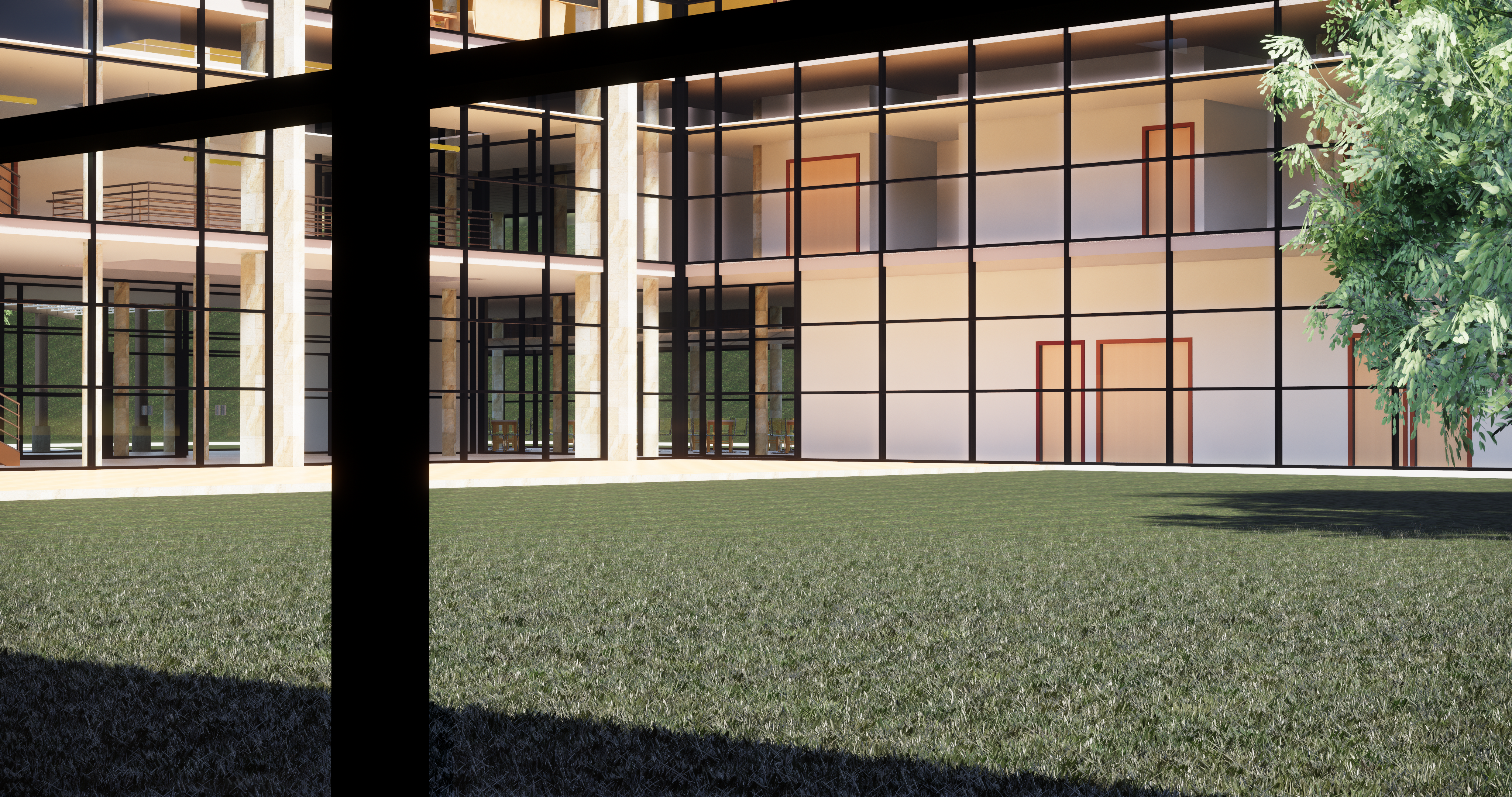
Wrong albedo – grass too dark

Corrected albedo – grass more realistic
Conclusion
Albedo might seem like an insignificant setting, but in fact it has a big impact on the believability of your renders. The game industry understood this and applies albedo consistently to achieve realistic effects. We can and should do the same in architecture!
It can be a challenge finding an albedo standard for all materials we use. But, with a firm understanding of the concept and application of the basics, we can make some assumptions which will result in beautiful images which will impress our clients and peers. Please check the tables and links in this article – save them to your bookmarks to find them easily.

Dan Stine
He is an Author, Blogger, Educator,
BIM Administrator and Wisconsin registered architect.
He works full-time at LHB – a 250 person full-service design firm.
He is an Author, Blogger, Educator,
BIM Administrator and Wisconsin registered architect.
He works full-time at LHB – a 250 person full-service design firm.
LinkedIn – https://www.linkedin.com/in/danstinemn